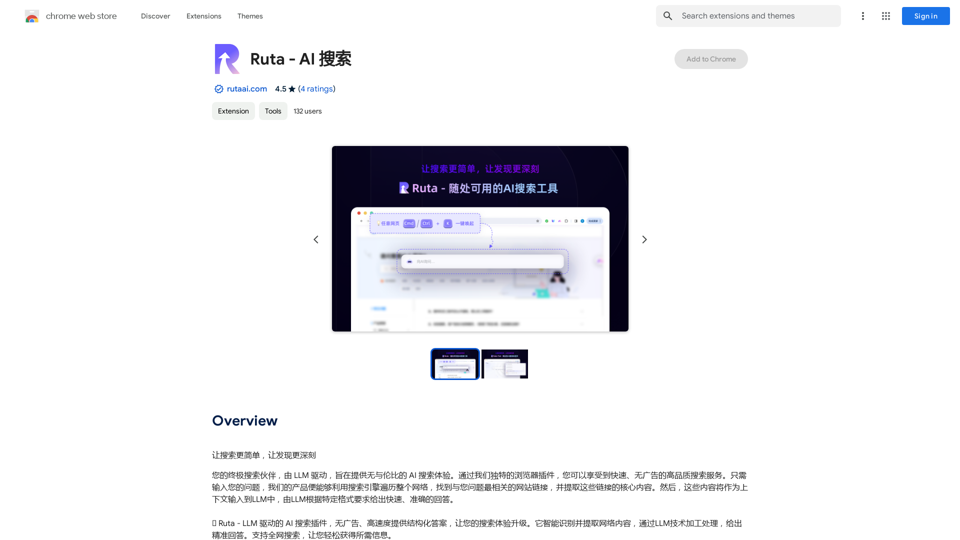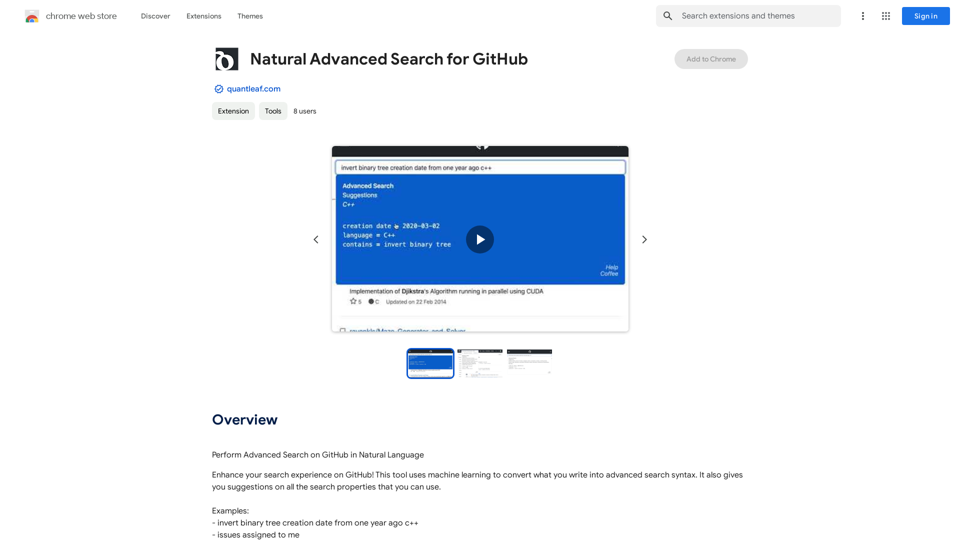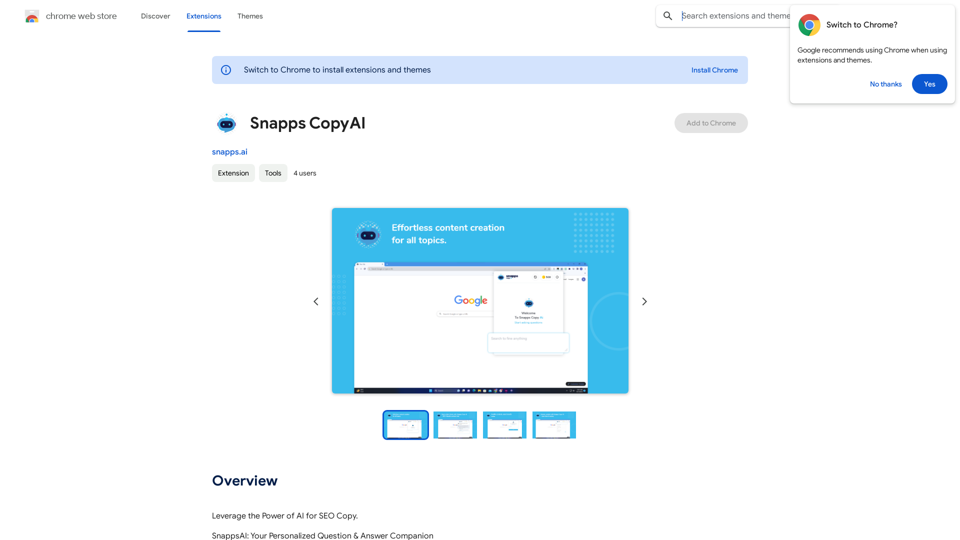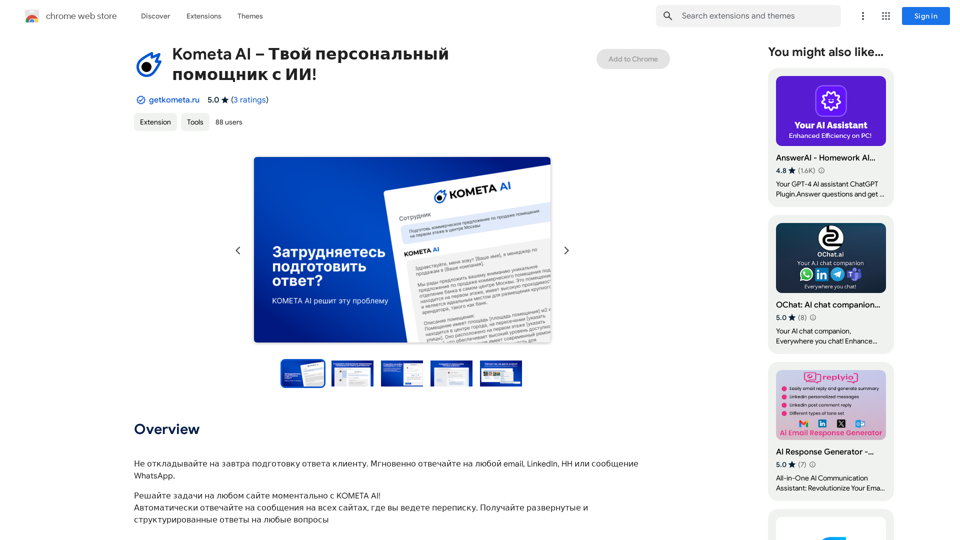ChatTuesday.com is a platform that enables users to create personalized chatbots similar to ChatGPT, integrated with their own data. It transforms user data into an advanced Generative AI digital assistant, which can be embedded on websites or utilized through integrations and API. This platform offers comprehensive features for customization, multiple bot creation, and multi-language support.
ChatTuesday.com - Customized Data. Empower with Gen-AI Platform
Unlock the full power of a custom-made chatbot, just like ChatGPT, perfectly combined with your unique information.
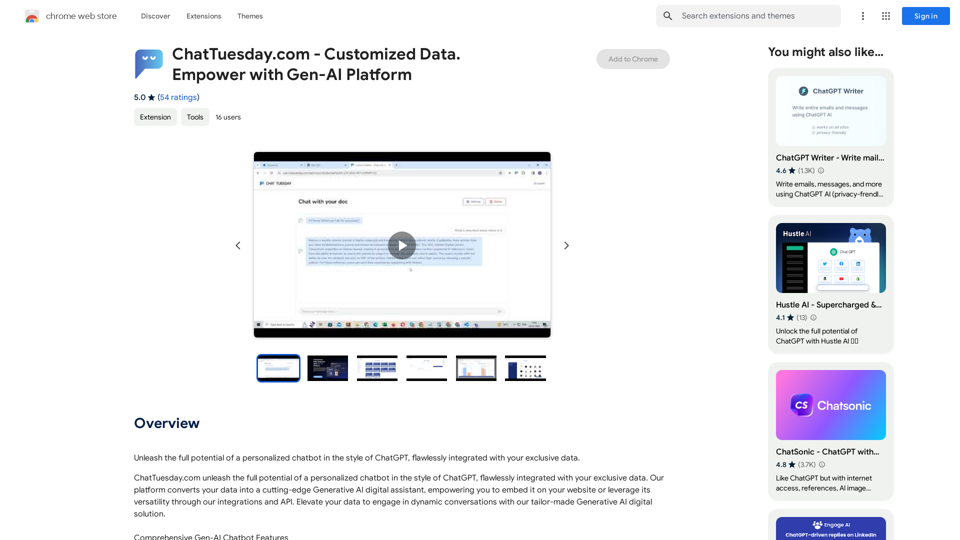
Introduction
Feature
Customized Data Integration
- Combine PDF, Dropbox, Typeform, and website data
- Simple integration process: link data sources, upload files, or include website for crawling
Flexible Bot Configuration
- Customize each bot with different models and roles
- Create multiple bots for various use cases
- Configure digital assistants for specific roles (e.g., sales agent, customer service)
Multilingual Support
- Pre-built translation modules for different languages
Lead Generation
- Capture leads and acquire customer data
- Deliver tailored experiences to potential clients
Easy Installation and Use
- Install "Chat Tuesday Redirect" Chrome extension
- Click extension icon in browser toolbar
- Access personalized dashboard or relevant pages based on subscription status
Pricing
- Affordable subscription plan available
- Detailed pricing information on the ChatTuesday.com website
FAQ
What is the purpose of the "Chat Tuesday Redirect" extension?
The extension enhances the Chat Tuesday experience by providing seamless redirection based on the user's browsing context and subscription status.
How do I benefit from plan-based redirection?
To benefit from plan-based redirection, ensure you are logged into Chat Tuesday and have an active subscription. This allows for personalized access to your dashboard or relevant pages.
What are some helpful tips for using ChatTuesday.com?
- Customize your chatbot to align with your brand's needs
- Utilize the lead generation feature to capture leads and acquire customer data
- Integrate the chatbot with your website for a seamless user experience
Latest Traffic Insights
Monthly Visits
193.90 M
Bounce Rate
56.27%
Pages Per Visit
2.71
Time on Site(s)
115.91
Global Rank
-
Country Rank
-
Recent Visits
Traffic Sources
- Social Media:0.48%
- Paid Referrals:0.55%
- Email:0.15%
- Referrals:12.81%
- Search Engines:16.21%
- Direct:69.81%
Related Websites
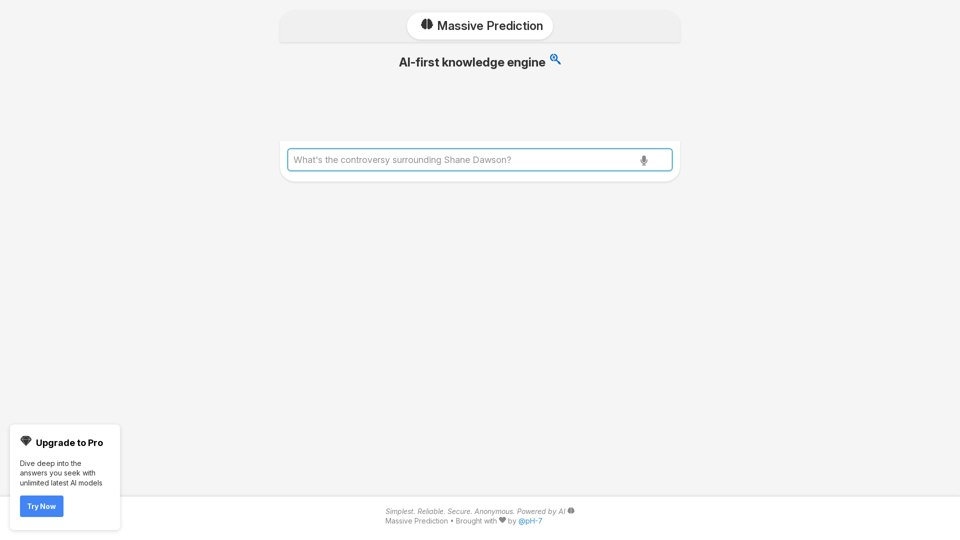
An AI-powered search engine that provides immediate answers to your most important questions.
An AI-powered search engine that provides immediate answers to your most important questions.MassivePrediction: A specialized AI search engine that is always available and runs directly in your browser. It instantly retrieves highly relevant content from the internet that was created by AI.
0
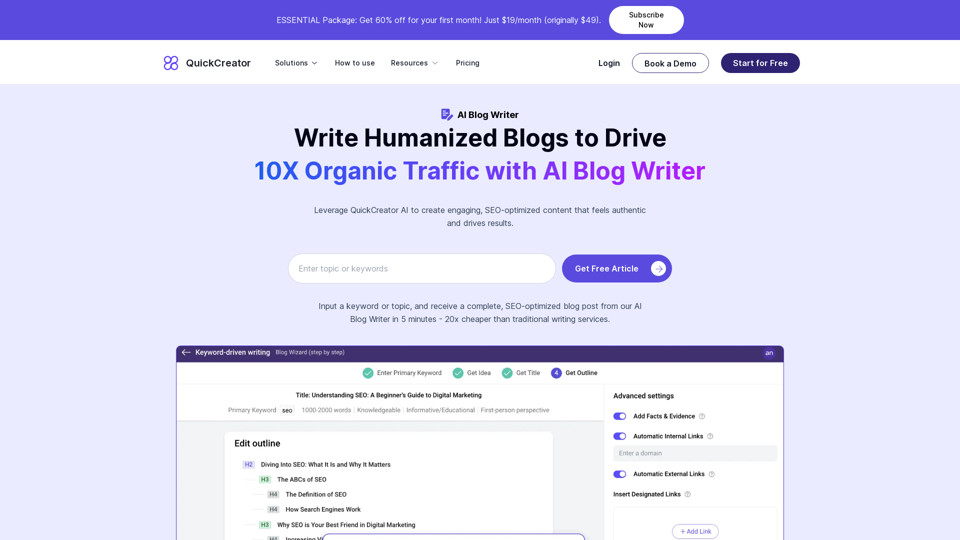
AI Blog Writer - Create Humanized, SEO-Optimized Blogs | QuickCreator
AI Blog Writer - Create Humanized, SEO-Optimized Blogs | QuickCreatorElevate your content with AI Blog Writer by QuickCreator. Generate engaging, human-like blog posts using real-time data and verified citations. Try it for Free.
97.34 K
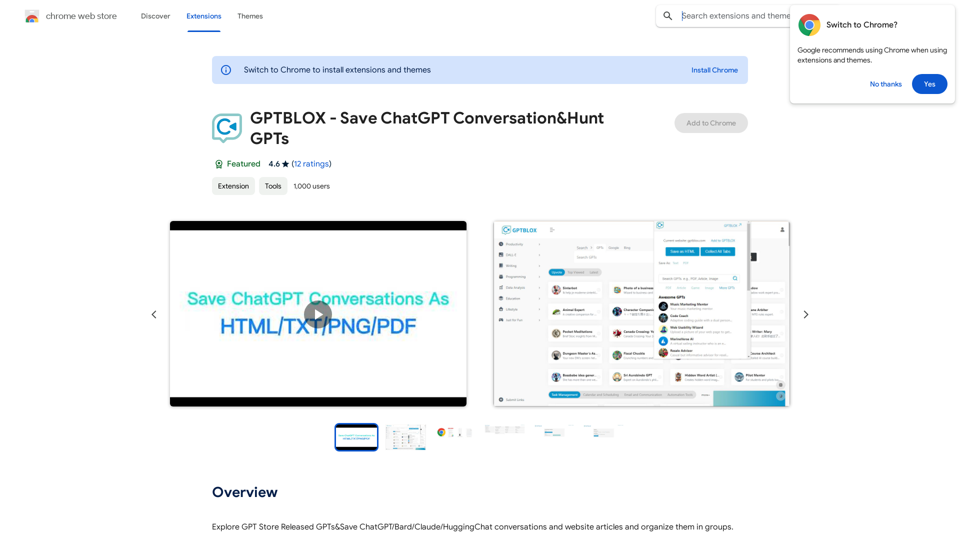
Discover the Power of GPT Store: Explore, Save, and Organize Conversations and Articles Explore the vast collection of GPTs released by the GPT Store, featuring conversations and articles from popular AI models like ChatGPT, Bard, Claude, and HuggingChat. This innovative platform allows you to: * Save conversations: Preserve valuable interactions with AI models for future reference or sharing. * Organize content: Categorize and group conversations and articles by topic, theme, or project, making it easy to access and review relevant information. Unlock the full potential of the GPT Store and streamline your workflow with its intuitive conversation and article management system.
193.90 M

Find your dream job faster: Apply automatically, get AI-powered answers, and discover personalized opportunities.
193.90 M
